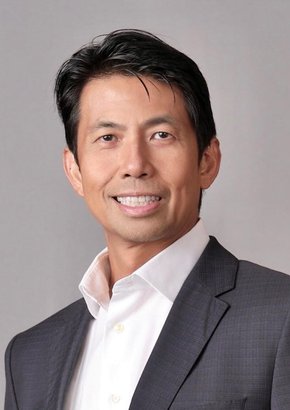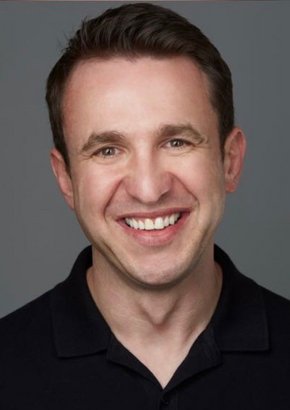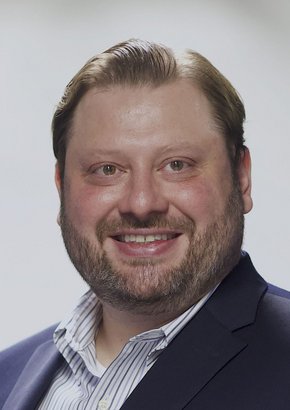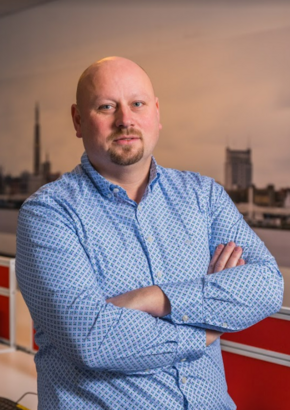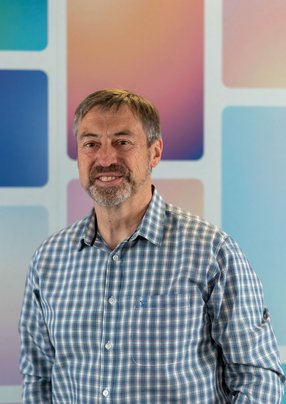
Dave Burgess
VP of Data Engineering at Pinterest

Pinterest is the visual inspiration platform used by people around the world to shop for products personalised to their taste, find ideas to do offline, and discover the most inspiring, original creators.
Beginning as a tool to help people collect the things they were passionate about online, today, more than 460 million people come to the platform every month to explore and experience billions of ideas.
Central to powering this platform is data engineering on a vast scale, as Dr. Dave Burgess, VP of Data Engineering at Pinterest, explains: “In Data Engineering we create and run reliable and efficient planet-scale data platforms and services to accelerate innovation at Pinterest, sustaining our business. We do everything from online data systems to logging data, big data and stream processing platforms, analytics and experimentation platforms, machine learning (ML) platforms, and the Pinterest Developer Platform for external developers to build applications using Pinterest APIs.”
Earning a doctorate at Oxford University, where he wrote code on supercomputers to simulate the flight of aircraft, Burgess moved to the US to do postdoctoral research at Stanford University in Silicon Valley.
“I was the fourth engineer of a startup called E2open, which provided visibility to companies into their supply chain, and subsequently went IPO,” he comments. “After E2open, I joined Yahoo! in the Strategic Data Solutions group and grew to being the Chief Architect of Global Display Advertising Solutions.”
“This was a springboard for me to be CTO of a couple of startups in online advertising and social networking. All of these roles used and leveraged data and technology to make decisions.”
Later joining Twilio to head up Data Engineering, Burgess is now responsible for Pinterest’s 200-person Data Engineering organisation. As he describes, he joined after he was approached by Pinterest’s Chief Architect, David Chaiken, who he had worked with at Yahoo!.
“David Chaiken was looking for someone to take over his temporary role as the head of Data Engineering at Pinterest,” Burgess comments. “The first person he introduced me to at Pinterest was Ben Silbermann, the CEO of Pinterest. I had a fantastic meeting with Ben and really enjoyed hearing his vision for the product and company.”
“After meeting with Ben I really wanted to meet the rest of the team and get a sense of the culture, talent, and technology. The rest is history.”
As Burgess describes, central to Pinterest’s plans for the future is innovating and creating new technologies and products that Put Pinners First.
The company will also look to improve its advertising products and expand its advertising partnerships with businesses of all sizes, while also becoming a more sustainable and socially responsible company, by reducing its environmental impact, promoting diversity and inclusion, and supporting causes related to social and environmental issues.
“We will make it easier for Pinners to shop for the things they love. Pinners will be able to go from being inspired to making this a reality in their lives,” Burgess adds. “We will also be a more sustainable company with almost 100% renewable energy for our operations.”
With the space moving quickly, making the most of the opportunities presented by developments in ML and AI will also be central to Pinterest’s success going forward.
“This space is changing quickly with the recent advances in Large Language Models, Stable Diffusion and Transformer models,” Burgess concludes. “We have the ability to generate images and text answers, augment ML models with more data, recognise objects in images, and create an augmented reality. We can also significantly improve our productivity with AI-assisted bots that generate code and answers.“
“There are many applications of this and it’s going to be a game changer.”
Pinterest is the visual inspiration platform used by people around the world to shop for products personalised to their taste, find ideas to do offline, and discover the most inspiring, original creators.
Beginning as a tool to help people collect the things they were passionate about online, today, more than 460 million people come to the platform every month to explore and experience billions of ideas.
Central to powering this platform is data engineering on a vast scale, as Dr. Dave Burgess, VP of Data Engineering at Pinterest, explains: “In Data Engineering we create and run reliable and efficient planet-scale data platforms and services to accelerate innovation at Pinterest, sustaining our business. We do everything from online data systems to logging data, big data and stream processing platforms, analytics and experimentation platforms, machine learning (ML) platforms, and the Pinterest Developer Platform for external developers to build applications using Pinterest APIs.”
Earning a doctorate at Oxford University, where he wrote code on supercomputers to simulate the flight of aircraft, Burgess moved to the US to do postdoctoral research at Stanford University in Silicon Valley.
“I was the fourth engineer of a startup called E2open, which provided visibility to companies into their supply chain, and subsequently went IPO,” he comments. “After E2open, I joined Yahoo! in the Strategic Data Solutions group and grew to being the Chief Architect of Global Display Advertising Solutions.”
“This was a springboard for me to be CTO of a couple of startups in online advertising and social networking. All of these roles used and leveraged data and technology to make decisions.”
Later joining Twilio to head up Data Engineering, Burgess is now responsible for Pinterest’s 200-person Data Engineering organisation. As he describes, he joined after he was approached by Pinterest’s Chief Architect, David Chaiken, who he had worked with at Yahoo!.
“David Chaiken was looking for someone to take over his temporary role as the head of Data Engineering at Pinterest,” Burgess comments. “The first person he introduced me to at Pinterest was Ben Silbermann, the CEO of Pinterest. I had a fantastic meeting with Ben and really enjoyed hearing his vision for the product and company.”
“After meeting with Ben I really wanted to meet the rest of the team and get a sense of the culture, talent, and technology. The rest is history.”
As Burgess describes, central to Pinterest’s plans for the future is innovating and creating new technologies and products that Put Pinners First.
The company will also look to improve its advertising products and expand its advertising partnerships with businesses of all sizes, while also becoming a more sustainable and socially responsible company, by reducing its environmental impact, promoting diversity and inclusion, and supporting causes related to social and environmental issues.
“We will make it easier for Pinners to shop for the things they love. Pinners will be able to go from being inspired to making this a reality in their lives,” Burgess adds. “We will also be a more sustainable company with almost 100% renewable energy for our operations.”
With the space moving quickly, making the most of the opportunities presented by developments in ML and AI will also be central to Pinterest’s success going forward.
“This space is changing quickly with the recent advances in Large Language Models, Stable Diffusion and Transformer models,” Burgess concludes. “We have the ability to generate images and text answers, augment ML models with more data, recognise objects in images, and create an augmented reality. We can also significantly improve our productivity with AI-assisted bots that generate code and answers.“
“There are many applications of this and it’s going to be a game changer.”
Pinterest is the visual inspiration platform used by people around the world to shop for products personalised to their taste, find ideas to do offline, and discover the most inspiring, original creators.
Beginning as a tool to help people collect the things they were passionate about online, today, more than 460 million people come to the platform every month to explore and experience billions of ideas.
Central to powering this platform is data engineering on a vast scale, as Dr. Dave Burgess, VP of Data Engineering at Pinterest, explains: “In Data Engineering we create and run reliable and efficient planet-scale data platforms and services to accelerate innovation at Pinterest, sustaining our business. We do everything from online data systems to logging data, big data and stream processing platforms, analytics and experimentation platforms, machine learning (ML) platforms, and the Pinterest Developer Platform for external developers to build applications using Pinterest APIs.”
Earning a doctorate at Oxford University, where he wrote code on supercomputers to simulate the flight of aircraft, Burgess moved to the US to do postdoctoral research at Stanford University in Silicon Valley.
“I was the fourth engineer of a startup called E2open, which provided visibility to companies into their supply chain, and subsequently went IPO,” he comments. “After E2open, I joined Yahoo! in the Strategic Data Solutions group and grew to being the Chief Architect of Global Display Advertising Solutions.”
“This was a springboard for me to be CTO of a couple of startups in online advertising and social networking. All of these roles used and leveraged data and technology to make decisions.”
Later joining Twilio to head up Data Engineering, Burgess is now responsible for Pinterest’s 200-person Data Engineering organisation. As he describes, he joined after he was approached by Pinterest’s Chief Architect, David Chaiken, who he had worked with at Yahoo!.
“David Chaiken was looking for someone to take over his temporary role as the head of Data Engineering at Pinterest,” Burgess comments. “The first person he introduced me to at Pinterest was Ben Silbermann, the CEO of Pinterest. I had a fantastic meeting with Ben and really enjoyed hearing his vision for the product and company.”
“After meeting with Ben I really wanted to meet the rest of the team and get a sense of the culture, talent, and technology. The rest is history.”
As Burgess describes, central to Pinterest’s plans for the future is innovating and creating new technologies and products that Put Pinners First.
The company will also look to improve its advertising products and expand its advertising partnerships with businesses of all sizes, while also becoming a more sustainable and socially responsible company, by reducing its environmental impact, promoting diversity and inclusion, and supporting causes related to social and environmental issues.
“We will make it easier for Pinners to shop for the things they love. Pinners will be able to go from being inspired to making this a reality in their lives,” Burgess adds. “We will also be a more sustainable company with almost 100% renewable energy for our operations.”
With the space moving quickly, making the most of the opportunities presented by developments in ML and AI will also be central to Pinterest’s success going forward.
“This space is changing quickly with the recent advances in Large Language Models, Stable Diffusion and Transformer models,” Burgess concludes. “We have the ability to generate images and text answers, augment ML models with more data, recognise objects in images, and create an augmented reality. We can also significantly improve our productivity with AI-assisted bots that generate code and answers.“
“There are many applications of this and it’s going to be a game changer.”
Read the full story HERE.


Featured Interviews
“Our ESG and DE&I programs are pivotal to ensuring that we not only strive to deliver excellence in data centre development and operations, but we also provide a welcoming and thriving work environment for our people along with developing strong connections with the communities in which we operate.”


